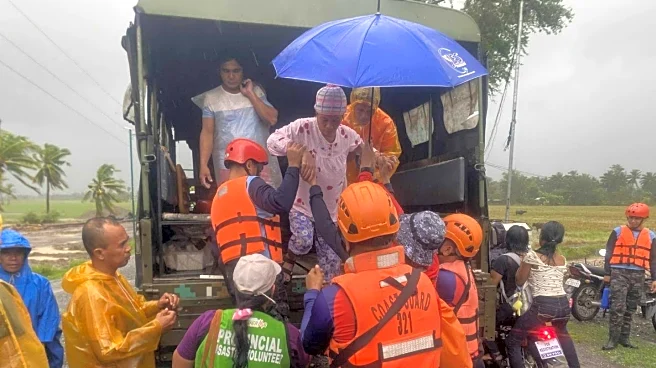What's Happening?
Typhoon Fung-wong has swept through the Philippines, causing significant damage to coastal towns. The storm, initially a super-typhoon, brought high winds of 185 km/h and massive waves that drenched the coastline.
Bridges were affected, and streets were flooded, forcing residents to swim through the water. The typhoon has weakened but is expected to continue its path towards Taiwan.
Why It's Important?
The impact of Typhoon Fung-wong highlights the vulnerability of coastal regions to severe weather events. Such natural disasters can have devastating effects on local communities, infrastructure, and economies. The Philippines, frequently affected by typhoons, faces challenges in disaster preparedness and response. The storm's aftermath may require significant recovery efforts and international aid to support affected areas.
What's Next?
As Typhoon Fung-wong moves towards Taiwan, authorities in the region are likely to prepare for potential impacts. The Philippines will need to focus on recovery and rebuilding efforts, addressing the immediate needs of displaced residents and repairing damaged infrastructure. The event may also prompt discussions on improving disaster preparedness and resilience in the face of climate change.
Beyond the Headlines
The typhoon underscores the importance of addressing climate change and its role in intensifying weather events. It may lead to increased advocacy for sustainable practices and policies to mitigate future risks. Additionally, the disaster could influence regional cooperation on climate adaptation strategies and emergency response protocols.












